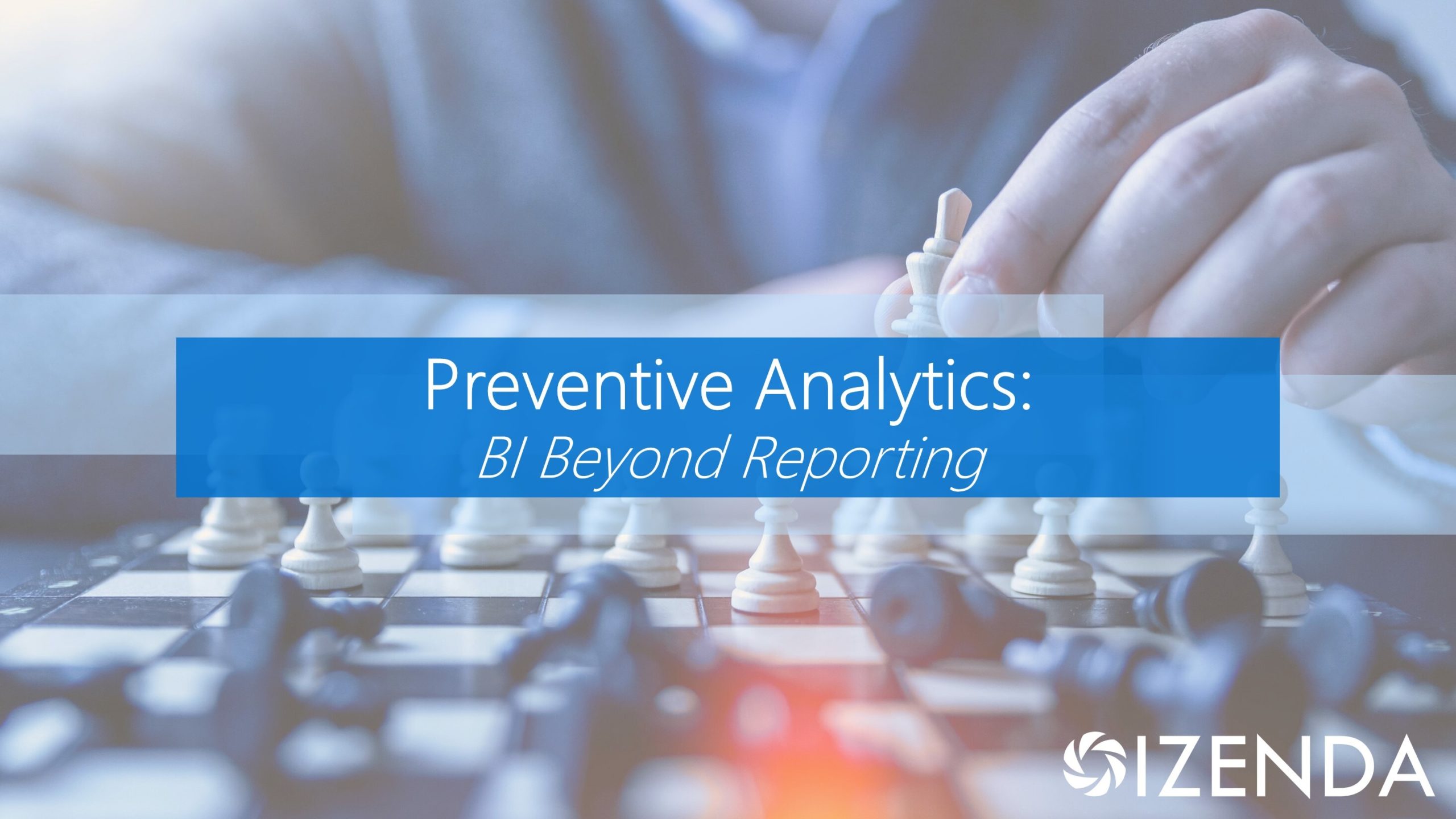
While most business owners are focusing on saving money and improving effectiveness with their business intelligence (BI) software, it’s not being used to its fullest potential if the focus is on optimizing existing processes. If you’re optimizing outdated processes, you may find that the processes can be eliminated entirely by a new approach to the problem.
So, instead of focusing on reporting, turn your attention to prediction and prevention for better business success.
Preventive Analytics
Optimization can be a goal of data analytics and BI software, but there are many situations for which prevention is the ideal option. For example:
- Preventing delays rather than reporting them.
- Preventing spoiled product rather than reporting it.
- Preventing customer loss rather than reporting on the number of losses.
- Preventing product failures rather than reporting them.
The ability to prevent comes from the ability to predict, which is a clear benefit of business intelligence software. If you can predict a situation, such as the examples mentioned, then you can use preventive analytics and specific measures to prevent it.
Prevention in Practice
The best way to illustrate the benefits of prevention is with an example. Let’s say we had a hospital in which we predicted the number of specific patients who were most likely to develop an infection. Infections are expensive for a hospital due to legal liabilities, increased levels of care, cleaning, and more.
If the intention is to prevent infections, each patient would get a score that’s based on their health history, current health, diet, and other information that identifies their risk of acquiring an infection. After identifying these patients, preventive measures could be implemented, such as extra hospital stays, follow-up appointments, additional medications, and other interventions to lower the risk of infection.
Transitioning From Predictive Analytics to Preventive Analytics
In e-commerce, one of the biggest concerns is merchandise returns. Returns account for almost a third of online orders, compared to under 10 percent for purchases at physical stores. This is a growing issue for business owners since the expense of processing and shipping returned merchandise can be up to 65 percent of the cost of goods sold.
One way that BI software can address this issue with returns is by predicting the likelihood that a sale will result in merchandise being returned. If the customer scores high on that predictive metric, the business owner can try one of the following preventive actions:
- Increasing the professional services included with the product to ensure the customer is satisfied.
- Adding remote inspections to monitor the performance data of products to predict performance problems before they occur.
- On-site product inspections to monitor performance.
- Refusing the sale to customers with too high of a predictive metric, such as a customer ordering several versions of the same product, meaning they intend to keep only one.
Rather than merely reporting on the percentage of returns, business owners can take preventive actions to potentially reduce the return rate for merchandise and save the return costs.
See What Izenda Can Do for You
As you can see, the best way to reduce operating costs and risks is by preventing them from happening in the first place, which can be done with BI software. If you want to experience the full range of BI capabilities, contact Izenda to see how our BI solutions can help you!


